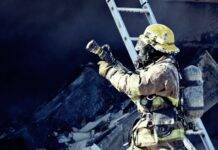
Confined Space Hazards and Control Measures
Confined spaces can pose significant risks to workers’ safety and health. Understanding these hazards and implementing effective control measures is crucial to prevent accidents and ensure a safe working environment.
Introduction to Confined Spaces
When we talk about confined spaces, we refer to areas with limited entry and exit points, inadequate ventilation, and potential hazards that can endanger individuals working within them. These spaces vary widely, from storage tanks and silos to sewers and underground vaults.
Common Hazards in Confined Spaces
- Lack of Oxygen Oxygen-deficient atmospheres within confined spaces can lead to dizziness, unconsciousness, and even death. Understanding the causes and effects is vital for ensuring worker safety.
- Presence of Toxic Gases Toxic gases such as hydrogen sulfide or carbon monoxide can accumulate in confined spaces, posing severe health risks to workers.
- Physical Hazards Limited space can result in physical hazards, including the risk of entrapment, engulfment, or injury due to restricted movement.
- Psychological Factors Working in confined spaces can also lead to psychological stressors, impacting workers’ mental well-being and overall safety.
Understanding Confined Space Hazards
Oxygen Deficiency: Causes and Effects
Toxic Gases: Identifying and Managing Risks
Physical Hazards: Preventing Accidents
Psychological Factors: Impact on Workers
Control Measures for Confined Space Hazards
Implementing effective control measures is essential:
Ventilation Systems
Gas Monitoring and Testing
Personal Protective Equipment (PPE)
Training and Education
Importance of Risk Assessment and Planning
Conducting comprehensive risk assessments and devising safety plans are fundamental steps in ensuring confined space safety.
Regulatory Compliance and Standards
Understanding and complying with relevant regulations, such as those set by OSHA, are critical for creating a safe working environment.
Best Practices for Confined Space Entry
Pre-entry Procedures
Continuous Monitoring During Work
Emergency Procedures and Rescue Plans
Case Studies: Real-life Incidents and Lessons Learned
Analyzing past incidents helps in extracting valuable lessons for improved hazard control.
The Role of Technology in Mitigating Confined Space Hazards
Innovative technological solutions play a crucial role in detecting and preventing confined space hazards.
Training and Awareness Programs
Educating workers and fostering a safety-conscious culture are essential for mitigating risks.
Confined spaces pose various hazards due to their enclosed nature, such as poor air quality, limited space, and potential for engulfment. Here are some common hazards and control measures:- Poor Air Quality:
- Hazard: Lack of oxygen, presence of toxic gases, or combustible atmospheres.
- Control Measures:
- Continuous air monitoring.
- Ventilation systems or forced-air systems to ensure adequate oxygen levels.
- Use of respirators or breathing apparatus if needed.
- Engulfment and Entrapment:
- Hazard: Risk of being trapped by materials or substances.
- Control Measures:
- Lockout/tagout procedures to prevent accidental operation of machinery.
- Adequate training for workers on safe entry and exit procedures.
- Presence of rescue teams or equipment for emergency situations.
- Limited Space and Access:
- Hazard: Difficulty in moving or escaping in case of an emergency.
- Control Measures:
- Regular training and drills for emergency evacuation.
- Use of proper equipment and tools suitable for confined spaces.
- Ensuring easy access and exit points at all times.
- Temperature Extremes:
- Hazard: Extreme temperatures (hot or cold) within the confined space.
- Control Measures:
- Monitoring and controlling temperature levels.
- Providing appropriate personal protective equipment (PPE) for extreme conditions.
- Communication Issues:
- Hazard: Lack of communication or monitoring of workers inside the confined space.
- Control Measures:
- Two-way communication devices for constant contact.
- Supervision and regular check-ins for workers inside the space.
- Hazardous Materials:
- Hazard: Presence of dangerous substances, chemicals, or materials.
- Control Measures:
- Proper labeling of hazardous materials.
- Use of personal protective equipment (PPE) as per safety guidelines.
- Implementation of safe handling procedures and material safety data sheets (MSDS).
Remember, proper risk assessment, thorough training, and adherence to safety protocols are crucial for mitigating these hazards and ensuring the safety of workers in confined spaces.Costs and Benefits of Hazard Control Measures
Balancing safety investments with operational costs is a critical aspect of effective hazard control.
Challenges in Implementing Control Measures
Overcoming barriers and challenges in implementing safety measures is necessary for a safer work environment.
Continuous Improvement and Adaptation
Evolving strategies and continuously improving safety measures are imperative for sustained hazard control.
Conclusion
In summary, understanding confined space hazards and implementing effective control measures are paramount for ensuring the safety and well-being of workers.
Confined Space Toolbox Talk Meeting
How To Make JSA for Confined Space Activity
How to Make HIRA on Confined Space?
Confined Space Basic Safety Knowledge
FAQs
- What defines a confined space? A confined space is an area with limited entry and exit, not intended for continuous occupancy, which may have restricted airflow and potential hazards for those inside. These spaces vary widely and can include tanks, vaults, and sewers.
- How can workers identify oxygen deficiency in a confined space? Workers can use portable gas detectors or monitors to measure oxygen levels in a confined space. An oxygen level below 19.5% is considered deficient and poses significant risks.
- Why is psychological safety important in confined spaces? Psychological safety is crucial because working in confined spaces can induce stress and anxiety. Workers need assurance, support, and proper training to manage the psychological challenges associated with confined spaces effectively.
- What role does training play in preventing confined space hazards? Training equips workers with the knowledge and skills to recognize hazards, use safety equipment, and respond effectively to emergencies. Properly trained workers are better prepared to mitigate risks.
- How can technology aid in monitoring confined spaces effectively? Technology, such as gas detectors and remote monitoring systems, enables real-time tracking of conditions within confined spaces. These tools provide early warnings, allowing prompt action to prevent hazards and ensure worker safety.
























